Introduction
Low back pain is a widespread and debilitating condition that can affect people of all ages. It is essential to understand the various potential causes of low back pain to facilitate accurate diagnosis and effective treatment. In this blog, we will explore 12 common causes of low back pain, with a focus on each cause’s characteristics, symptoms, and available treatment options, supported by references from published articles and medical journals.
Sacroiliac Joint Disease


The sacroiliac joint (SI joint) is located between the sacrum and the ilium bones of the pelvis. Dysfunction in the SI joint can lead to localized pain in the lower back, often aggravated by prolonged sitting, walking, or climbing stairs. Conservative treatments include physical therapy, SI joint injections, and stabilization exercises.
Lumbar Disc Herniation – Discogenic Pain
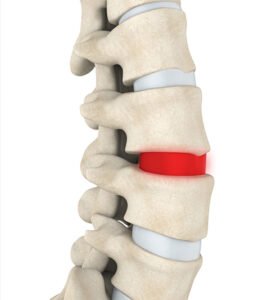

A lumbar disc herniation occurs when the inner gel-like substance (nucleus pulposus) of an intervertebral disc protrudes and irritates nearby structures. This can cause localized low back pain. Treatment options include physical therapy, epidural steroid injections, and in some cases, surgery.
Lumbar Disc Herniation with Nerve Root Impingement – Radiculopathy/Sciatica
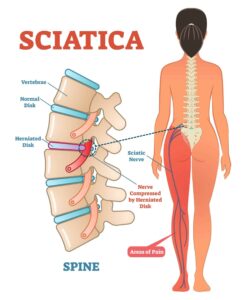

When a herniated disc compresses a spinal nerve root, it can lead to radiculopathy, commonly known as sciatica. Symptoms include pain, numbness, or tingling that radiates down one leg. Conservative treatments include rest, anti-inflammatory medications, physical therapy, transforaminal epidural injections and surgical intervention if necessary.
Lumbar Facet Joint Disease
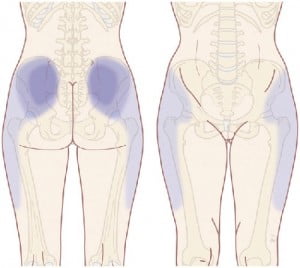

Facet joints in the lumbar spine can become arthritic, leading to facet joint pain. Symptoms include localized pain that can radiate to the buttocks and thighs. Treatment options include facet joint injections, physical therapy, and, in severe cases, radiofrequency ablation.
Canal Stenosis


Spinal stenosis is the narrowing of the spinal canal, which can compress the spinal cord or nerve roots. Symptoms include back pain, leg pain, and neurogenic claudication. Conservative treatments may include physical therapy, epidural injections, and surgical decompression in severe cases.
Osteoporotic Fractures


Vertebral fractures, often due to osteoporosis, can cause sudden and severe low back pain. Management involves pain control, bracing, verterbroplasty and osteoporosis treatment to prevent future fractures.
Lumbosacral Strain


Muscular strains in the lumbosacral region, often caused by lifting heavy objects or sudden movements, can result in acute low back pain. Treatment includes rest, ice, anti-inflammatory medications, and physical therapy.
Piriformis Syndrome
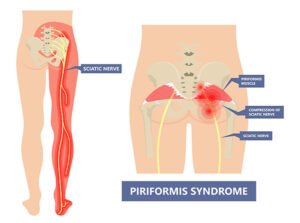

The piriformis muscle, located in the buttocks, can compress the sciatic nerve, leading to symptoms similar to sciatica. Treatment options include stretching exercises, physical therapy, and in some cases, injection therapy.
Quadratus Lumborum Syndrome


Quadratus lumborum, a deep back muscle, can cause low back pain when strained. Physical therapy, stretching, and strengthening exercises can be effective in managing this condition.
Gluteal Trigger Points
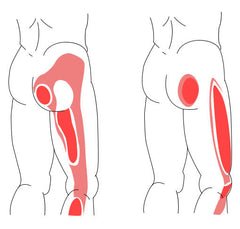

Myofascial trigger points in the gluteal muscles can refer pain to the low back. Trigger point injections, physical therapy, and massage therapy are common treatment approaches.
Abdominal Aortic Aneurysm
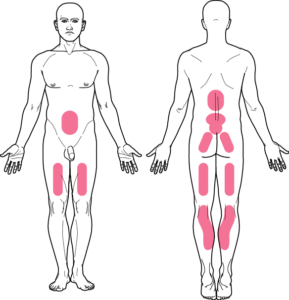

Potential pain sites associated with abdominal aortic aneurysm. Back pain is present in around 50% of pre-rupture aneurysms. Buttock and thigh symptoms may be referred from the vessel itself. Calf pain may be a result of distal embolization.
An abdominal aortic aneurysm (AAA) is a potentially life-threatening condition. While it typically causes abdominal pain, it can radiate to the lower back. Treatment may include surgery to repair the aneurysm.
Infections like Pott’s Spine/Discitis and Tumors


MRI showing Tuberculous destruction of the spine. Also referred to as Pott’s spine
Infections like Pott’s spine (tuberculosis affecting the spine) and tumors in the spine can lead to low back pain. Treatment varies and may include antibiotics for infections or surgery for tumor removal.
Conclusion
Low back pain can have various underlying causes, each requiring a different approach to diagnosis and treatment. It is crucial to consult a healthcare professional such as ALLEVIATE PAIN CLINIC to accurately identify the source of pain and develop a tailored treatment plan. Early intervention and appropriate management can significantly improve the quality of life for individuals suffering from low back pain.
References
- Cohen, Steven P. Sacroiliac joint pain: a comprehensive review of anatomy, diagnosis, and treatment. Anesthesia & Analgesia 101.5 (2005): 1440-1453.
- Andersson, Gunnar BJ. Epidemiological features of chronic low-back pain. The Lancet 354.9178 (1999): 581-585.
- Ropper, Allan H., and Robert H. Brown. Adams and Victor’s principles of neurology. (2014): 1922-1926.
- Manchikanti, Laxmaiah, et al. An update of the systematic appraisal of the accuracy and utility of lumbar facet joint interventions. Pain Physician 15.6 (2012): E869-E907.
- Haddas, Ron, and Sushrut N. Kulkarni. Lumbar Spinal Stenosis. (2021).
- Johnell, Olof, and John A. Kanis. An estimate of the worldwide prevalence and disability associated with osteoporotic fractures. Osteoporosis International 17.12 (2006): 1726-1733.
- Wippert, Pia-Maria, et al. Systematic review of the prognosis of non-specific low back pain with or without radiculopathy. European Journal of General Practice 21.3 (2015): 143-150.
- Plastaras, Christopher T., et al. Piriformis syndrome: a review of the evidence and proposed management guidelines. The Pain Physician 17.3 (2014): 273-285.
- Arbanas, Juraj, et al. The quadratus lumborum: anatomy, morphology, function and pathology. Collegium antropologicum 34 (2010): 317-321.
- Tough, Eric A., et al. Myofascial trigger points in the piriformis muscle: evaluation of the current injection technique. The American Journal of Sports Medicine 36.12 (2008): 2374-2378.
- Kent, K. Craig. Clinical practice. Abdominal aortic aneurysms. New England Journal of Medicine 371.22 (2014): 2101-2108.
- Moon, Byung Joo, and David D. Waters. Tuberculous spondylitis (Pott’s disease). The Journal of bone and joint surgery. American volume 86.2 (2004): 460-471.



